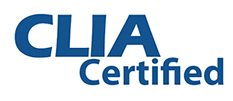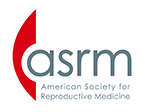
For those who’ve been diagnosed with infertility, IVF offers an excellent solution. Depending on your diagnosis, IVF’s success rates are high and the risks are relatively low. In vitro fertilization involves several steps before that successful outcome, though, and we’re here to help you understand the many steps involved in your timeline of treatment.
The First Few Weeks
If you haven’t already consulted with a fertility specialist, schedule your first appointment now. At this appointment, you will meet with your doctor, discuss your medical history, and based on the information the doctor gathers, undergo testing. This may take a few weeks as the doctor assesses your fertility and your partner’s reproductive health as well.
Synching Your Cycle (30 Days)
When you begin your IVF cycle your doctor must be able to predict your menstrual cycle. That means, in some cases, you’ll start taking birth control pills. While seemingly counterintuitive to conception, the low-dose pills help regulate your cycle.
During this time your doctor schedules baseline ultrasounds and blood tests before your period starts.
Ovarian Stimulation (10-14 Days)

Once your cycle begins again your doctor prescribes hormone medication that stimulates your ovaries. Due to these hormonal meds, your ovaries produce more mature eggs at one time. You typically take these medications for 8-10 days during which your doctor regularly monitors impending ovulation via ultrasound and blood tests. Depending on what they note from the tests your doctor may tweak your medication to get the results they want.
Ovulation Induction (34-36 Hours)
Once the doctor confirms your follicles are mature and ready for ovulation they administer a shot of HCG (human chorionic gonadotropin). This hormone, often referred to as the “pregnancy hormone”, also causes ovulation by stimulating the follicles to release mature eggs.
Administering your trigger shot is very important. Plan accordingly as the egg retrieval takes place 34-36 hours later (typically).
Egg Retrieval Day (Outpatient Procedure)
On the day of your egg retrieval, your doctor retrieves your mature eggs via aspiration. You’re sedated and your doctor, guided by ultrasound, inserts a needle through the vaginal wall to access the ovaries. The needle aspirates eggs and surrounding fluid using a very gentle suction.
Once the doctor collects the eggs they send them to the lab so an embryologist may assess them for viability. You’re sent to recovery where you remain until the clinic deems it safe for you to go home. Your companion for the egg retrieval appointment drives you home and you finish recovering there. You may experience mild pain, cramping, and drowsiness. If you experience any excessive or unusual side effects, please contact the clinic immediately. Most patients return to normal activity the following day.
Fertilization and Embryo Development (5-6 Days)
Once the egg retrieval occurs, the lab confirms the collected eggs viability, and the embryology lab collects your partner’s sperm. fertilization takes place. Over the next few days, the lab monitors your embryo development. This takes about 5-6 days.
A Word About PGT (2-4 weeks)

Once the embryos reach the blastocyst stage you may choose preimplantation genetic testing (PGT). If that is the case the embryology lab draws cells from the placental portion of your embryos and tests for genetic conditions, chromosomal abnormalities, and potential birth defects. The testing is very safe for the embryos and helps ease concerns regarding chromosomal abnormalities. Patients choose PGT if there is a known genetic condition, advanced maternal age, or if the patient experienced recurrent miscarriages. There may be other reasons and the test provides peace of mind.
If you opt for PGT, it will interrupt your timeline. While waiting for the results the lab freezes your embryos, preserving them until your results are in, usually within 10 days. Your doctor advises you on the timeline from that point.
Embryo Transfer (Outpatient Procedure)
Your embryo transfer typically takes place as an outpatient procedure and takes about 15 minutes. You’re not sedated and the procedure is mildly uncomfortable at work. Your doctor transfers the embryo(s) into your uterus using a slim catheter.
After your transfer, your doctor recommends you take it easy and avoid strenuous activities for the next 48 hours or so. No heavy lifting and avoid prolonged standing. Prioritize your well-being and binge that TV show everyone’s been talking about or read a good book.
Pregnancy Test (2 Weeks After Embryo Transfer)
About 2 weeks post-transfer you may take a pregnancy test. If the test is positive your doctor schedules another test a few days later to confirm. Your clinic continues to monitor your pregnancy and once your doctor sees you’re progressing normally, your fertility doctor releases you into the care of your Obstetrician.
Start Your Timeline

The average timeline for IVF treatment is around one to two months. Of course, your timeline may extend depending on whether or not you decide to undergo PGT, or if there are any extenuating circumstances along the process.
For more on what you may expect from IVF treatment please contact LA IVF today. Let’s start growing your family.









